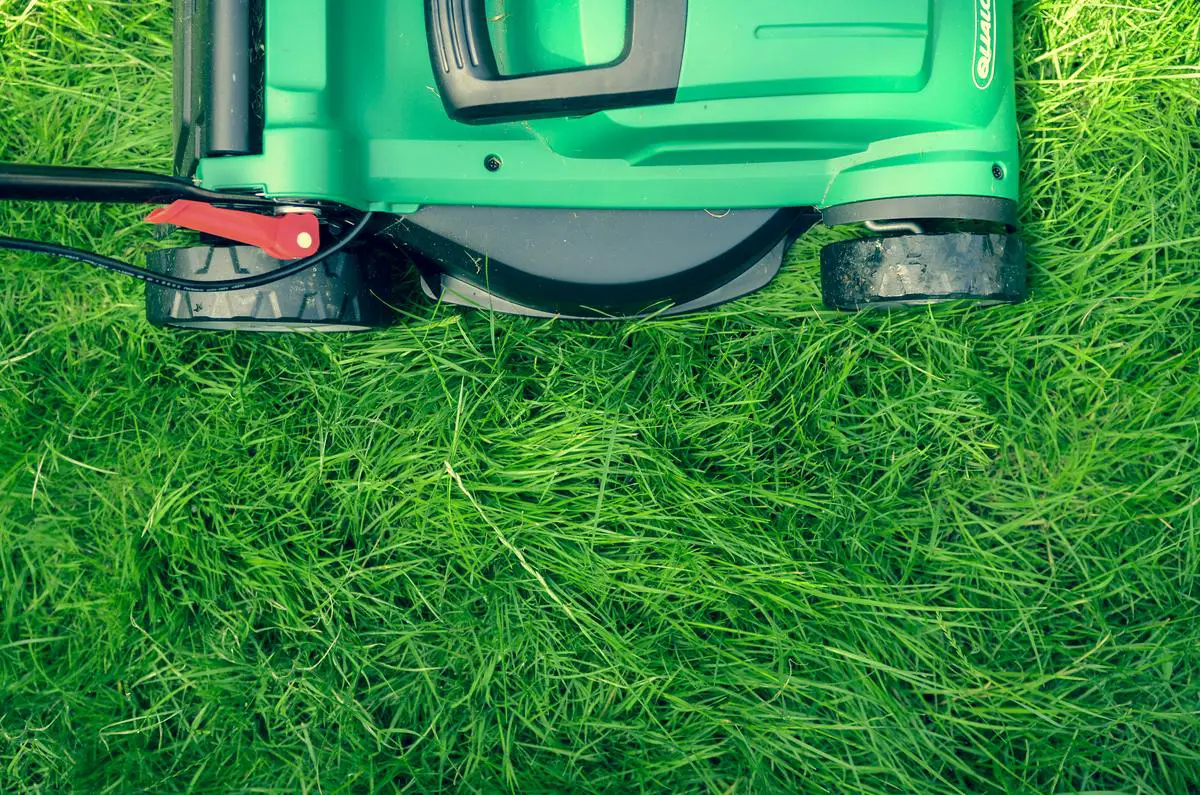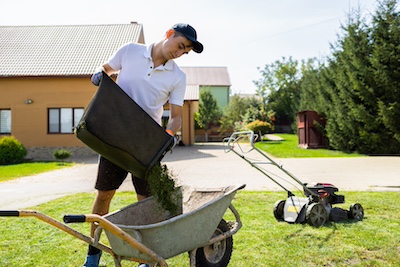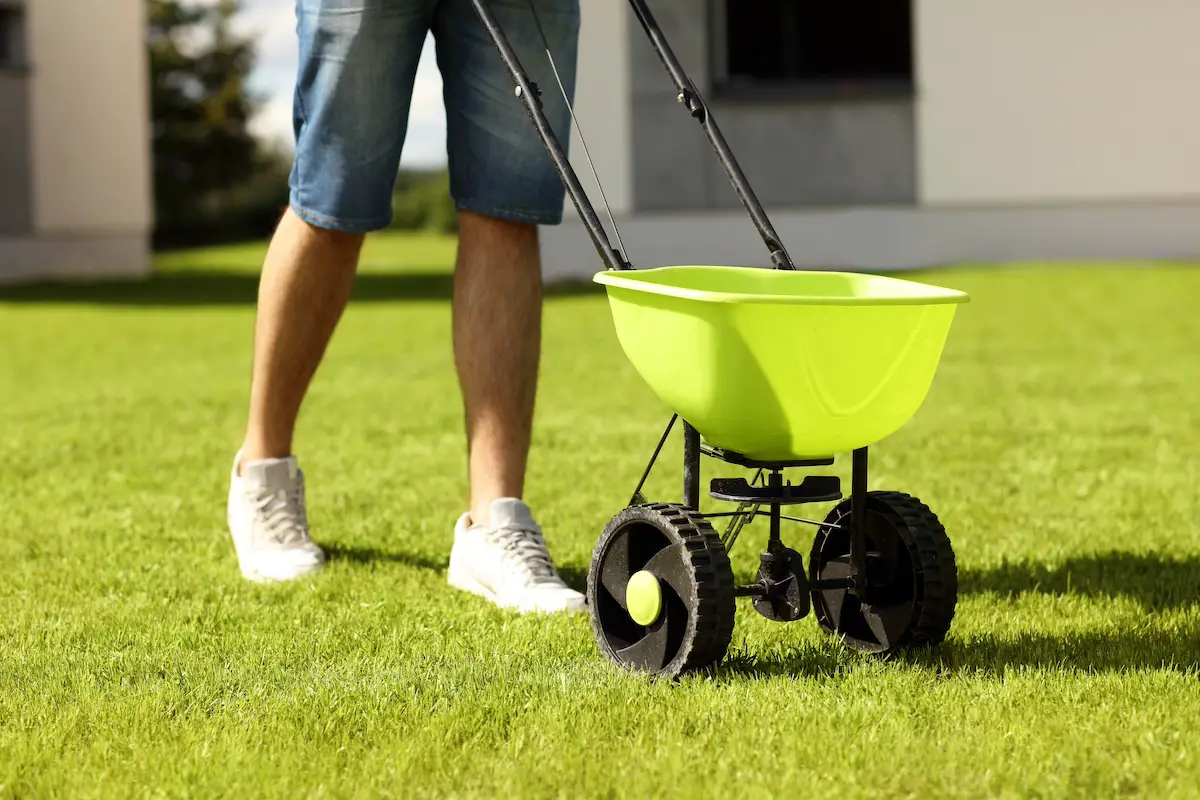A lush, vibrant lawn not only enhances the beauty and enjoyment of outdoor spaces but also contributes to the overall health of our environment. Choosing the right lawn fertilizers is paramount in achieving that picture-perfect greenery homeowners dream of.
With options ranging from slow-release granular to fast-acting liquid lawn fertilizers, along with environmentally-conscious organic alternatives, there is a tailored solution for every lawn care enthusiast.
In this post, we will delve into the various types of lawn fertilizers available, offering insights into their use, benefits, and impact on your grass, soil, and the broader ecosystem.
Slow-Release Granular Lawn Fertilizers
You’ve tried everything from singing to your grass to virtually pleading with the skies for just the right amount of sunshine and rain. Well, guess what? You can toss those ancient lawn care myths aside.
Embracing the low-maintenance lawn life is not only possible, but it’s delightfully doable! Here’s the real scoop on how to make your grass the greenest on the block without breaking a sweat (or your back).
Embrace a ‘Less is More’ Mowing Strategy
Put that mower in storage because your lawn needs some breathing room! Mowing too often stresses the grass, but if you let it grow a tad taller, you’re promoting healthier roots.
Adjust your mower to a higher setting and aim for a length of about 3 inches to shade the soil, which in turn reduces water evaporation.
Select the Right Seed
Starting from scratch or laying down new patches? Opt for drought-resistant and native grass varieties that are well-suited to your regional climate. These grasses ask for less and reward you more, standing strong against pests and harsh weather conditions.
Smart Watering is Key
Believe it or not, your lawn prefers a deep, infrequent drink over a daily sprinkle. Encourage roots to reach deep into the soil by watering heavily once or twice a week instead of a little each day. Early morning watering is prime time since it decreases evaporation and fungal growth.
Say ‘No’ to Chemical Warfare
Give the boot to synthetic fertilizers and pesticides. They’re like junk food for your lawn – a quick fix with long-term issues. Organic options are your friends, slowly releasing nutrients and improving soil structure without the chemical hangover.
Mulching Matters
Leave those grass clippings on the lawn after you mow! They decompose and reincorporate essential nutrients back into the soil, acting as a natural and free fertilizer. It’s the circle of life at its finest, right in your backyard.
Compaction Correction
Traffic, be it from pets, kids, or backyard parties, squashes the life out of good soil. Aeration is the occasional spa treatment your lawn is silently begging for. Those small holes allow air, water, and nutrients to penetrate more deeply, keeping your turf resilient.
Welcome the Weeds…Well, Selectively
Weeds aren’t all villains in your lawn’s story. Some, like clover, are nitrogen-fixing heroes that naturally fertilize the ground. Embrace these beneficial weeds and manage the invasive ones through spot treatments with organic herbicides or old-fashioned hand-pulling.
Understand that Less is Often Enough
Overfeeding and overwatering do more harm than good. Sticking to a minimalist regimen makes you less likely to encounter issues with disease, pests, and thatch.
Modify Your Mindset
Lastly, a perfectly imperfect lawn is in vogue. Embrace the little quirks and minor imperfections. Your chill approach will not only give you a lush lawn but will also provide you with more free time to actually enjoy it – perhaps lounging in a hammock, reveling in the fruits of your not-so-hard work.

Liquid Lawn Fertilizers for Fast Action
Engage in Seasonal Aeration
Aeration is your secret weapon against thatch and soil compaction. Annually or biannually, depending on your turf’s needs, use a core aerator to remove small plugs of soil from your lawn.
This opens up the earth, allowing water, nutrients, and air to penetrate deeper, helping roots grow strong and resilient. Fall and spring are prime times for aeration when the lawn is growing most actively.
Introduce Beneficial Microorganisms
Bring life back to your soil by incorporating beneficial microorganisms. These tiny allies, including bacteria and fungi, are the unsung heroes of a vibrant lawn. They break down organic matter, like grass clippings and leaves, making nutrients available to your grass. Compost tea and organic soil amendments are two great ways to introduce these microbes to your lawn.
Apply Organic Lawn Tonics as Lawn Fertilizers
Consider natural, homemade remedies such as lawn tonics made from household ingredients. Items like beer, ammonia, dish soap, and soda aren’t just for the pantry – they can serve as the basis for an effective lawn treatment that gently feeds the grass while deterring common pests.
Practice Grasscycling
Don’t toss those grass clippings away! Grasscycling is the act of leaving clippings on the lawn after mowing. They decompose quickly, returning valuable nutrients like nitrogen back into the soil. This natural recycling not only saves time and energy but also reduces the need for supplemental fertilizers.

Introduce Local Clover Varieties
Add a sprinkle of magic to your turf with local clover varieties. Clover is low-maintenance, drought-resistant, and a natural fertilizer as it fixes nitrogen in the soil. It also creates a lush appearance and supports local pollinators. Mixed in with your usual grass seed, clover keeps lawns looking greener and fuller.
Regularly Sharpen Mower Blades
Never underestimate the power of a well-sharpened blade. Dull mower blades rip and tear grass, causing stress and increasing susceptibility to diseases. Sharp blades make clean cuts, helping the grass recover quickly and stay healthy. Aim to sharpen blades at least once a season or after about 10 hours of mowing time for the best results.
Focus on Long-Term Soil Health
Invest in your soil’s long-term health by adding organic matter annually. By top-dressing with compost or other organic materials, you’re not just feeding the grass—you’re building soil structure, enhancing its ability to retain water and nutrients, which leads to a healthier lawn over time.
Plan Mowing Patterns
Mix up your mowing patterns each time you mow. This prevents the grass from getting compacted and worn in specific areas. It also helps the grass blades stand tall and straight rather than leaning in one direction, leading to a more even and attractive lawn.
Patience and perseverance are key. Remember, transitioning to a healthier, fuller lawn doesn’t happen overnight. But with these strategies in place, you’re well on your way to a thriving, living carpet that’s not only a joy to behold but also a more eco-friendly choice for the environment.
Organic Lawn Fertilizers – Nourish Naturally
Aeration
Just like us, lawns breathe, and aeration ensures they do it properly. By creating small holes in the soil, air, water, and nutrients pass more easily to the grassroots. This can help promote deeper root growth and a more vigorous lawn. And guess what? Vigorous lawns fend off pests and diseases naturally, diminishing the need for chemical interventions.
Introduce Beneficial Microorganisms
Believe it or not, the soil is a battleground, and fostering a team of beneficial microorganisms is like having the best defense. These tiny allies break down organic matter, supplying nutrients to the grass. They also out-compete harmful pests and diseases.
Compost tea and other natural soil amendments can help increase these microorganisms’ presence and keep the soil ecosystem thriving.
Whip Up Organic Lawn Tonics
Homemade organic tonics can deliver the necessary nutrients to the lawn without the harmful side effects of synthetic chemicals. Ingredients like seaweed, fish emulsion, and Epsom salts offer a cocktail of nutrients that strengthen grass naturally. Not only are they safer for the environment, but they also encourage a deeper green color and robust health.
Grasscycling
Leaving grass clippings on the lawn can actually be a boon to its health. As they break down, they return nutrients to the soil, providing free lawn fertilizers. This process, known as grasscycling, also helps retain soil moisture, reducing the need for supplemental watering.
Introducing Local Clover Varieties
Mix clover into the lawn for a clever move towards eco-friendliness. Clover can fix nitrogen from the air and enrich the soil, reducing the need for additional fertilizers. It’s also drought-tolerant and stays green longer during dry spells. Plus, local varieties are already acclimated to the region’s climate, making them naturally hardier.
Sharpening Mower Blades
A cleanly cut grass blade heals faster and is less susceptible to pests and diseases. Dull blades, conversely, tear the grass, creating openings for pests and diseases to seep in. Keeping mower blades sharp not only contributes to a healthier and better-looking lawn but also supports an eco-friendly approach by reducing the lawn’s stress.
Focus on Long-term Soil Health
It’s all about crafting that ideal living environment down where the roots dwell. By regularly amending the soil with organic matter, practicing top-dressing with compost, and maintaining proper pH balance, the lawn gets the foundation it needs for sustainable health, reducing the need for quick-fix solutions that can harm the environment.
Planning Mowing Patterns
Shake up the monotony and avoid soil rutting by altering mowing patterns. This prevents the grass from being compacted in the same areas repeatedly, leading to unhealthy lawns that require more intensive care to maintain. By changing the pattern, the lawn will not only look better, but it will also be healthier and more resilient.
By embracing these tactics, the journey to a lush lawn need not be at odds with eco-conscious goals. Each step contributes to the greater well-being of the outdoor space and aligns with a commitment to sustainable, responsible lawn care.

Choosing the Best Lawn Fertilizers for Your Yard
Amidst the selection of lawn care products available, understanding the distinct benefits and appropriate applications of each fertilizer type can transform your lawn care routine.
Whether it’s adopting the slow nurturance of slow-release granular lawn fertilizers, the quick efficiency of liquid formulas, or the environmental harmony bestowed by organic options, each delivers unique advantages to both the lawn and the lawn keeper.
By considering the insights presented, individuals can make informed decisions to cultivate not only a beautiful lawn but one that thrives under their dedicated stewardship and care for the natural landscape.

